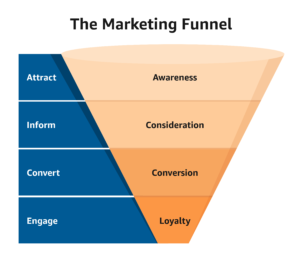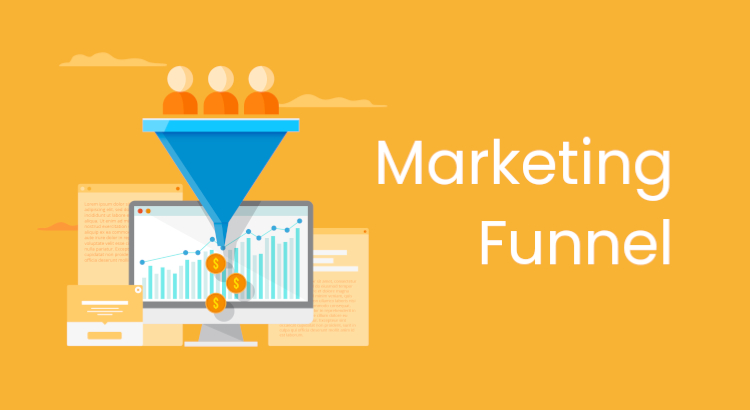Understanding the complexities of the marketing funnel is beneficial for businesses. It serves as a strategic roadmap, guiding businesses through the customer journey, from initial awareness to brand loyalty.
This article delves into the core concepts of the marketing funnel, exploring its stages and explaining why it is a cornerstone of successful marketing strategies.
What Is Marketing Funnel?
A marketing funnel is a visual representation of the customer journey, illustrating the various stages a potential customer goes through before making a purchase.
It is a conceptual framework that helps businesses comprehend and optimize their marketing efforts by aligning them with the customer’s decision-making process.
Why Are Marketing Funnels Important?
Marketing funnels provide businesses with valuable insights into customer behavior and preferences. By mapping out the customer journey, businesses can tailor their marketing strategies to address specific needs at each stage.
This targeted approach enhances customer engagement, increases conversion rates, and ultimately boosts the overall effectiveness of marketing campaigns.
Marketing Funnel Stages
Here are the essential marketing funnel stages.

Awareness
The awareness stage is the gateway to the marketing funnel, where potential customers first encounter a brand or product.
Through strategic marketing efforts such as advertising, social media campaigns, and content creation, businesses aim to generate initial interest and capture the attention of their target audience, laying the foundation for the customer journey.
Consideration
In the consideration stage, potential customers actively engage with the brand, seeking more information and evaluating their options.
This phase involves a deeper exploration of features, benefits, and values. Businesses deploy targeted content, personalized messaging, and educational resources to nurture prospects and guide them toward making informed decisions.
Conversion
The conversion stage is the pivotal moment when potential customers make the decision to become actual customers. Businesses employ persuasive tactics, compelling calls-to-action, and seamless user experiences to facilitate this transition.
It involves creating a sense of urgency, building trust, and delivering value, ultimately leading to successful transactions and customer acquisitions.
Loyalty
Post-purchase, the loyalty stage focuses on retaining and nurturing customers for long-term relationships. Satisfied customers are encouraged to become brand advocates, contributing to positive word-of-mouth marketing.
Loyalty programs, personalized offers, and exceptional customer support play vital roles in maintaining customer satisfaction, fostering brand loyalty, and generating repeat business.
How to Create a Marketing Funnel?
Creating a successful marketing funnel involves understanding the three main segments: Top of the Funnel (TOFU), Middle of the Funnel (MOFU), and Bottom of the Funnel (BOFU).
Top of the Funnel (TOFU)
This is the awareness stage, where the goal is to attract a broad audience. Strategies include social media marketing, blog content, and search engine optimization (SEO).
Middle of the Funnel (MOFU)
In the consideration stage, potential customers are nurtured with more specific content. Email campaigns, webinars, and targeted advertising can be effective in guiding them towards a decision.
Bottom of the Funnel (BOFU)
The conversion and loyalty stages are focused on driving the prospect towards making a purchase and retaining them as a customer. Tactics include personalized offers, testimonials, and customer support.
Summary of Marketing Funnel
The marketing funnel not only facilitates a strategic approach to customer engagement but also empowers businesses to adapt and thrive in the ever-evolving digital marketing environment. By understanding the nuances of each stage, businesses can build robust marketing strategies that resonate with their audience.
Image by Freepik


